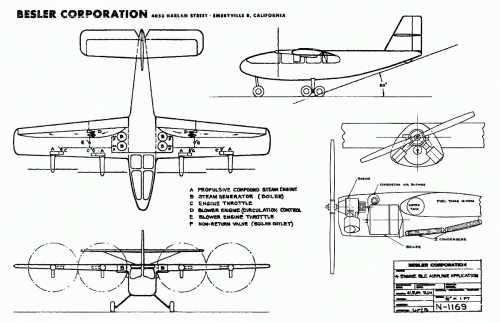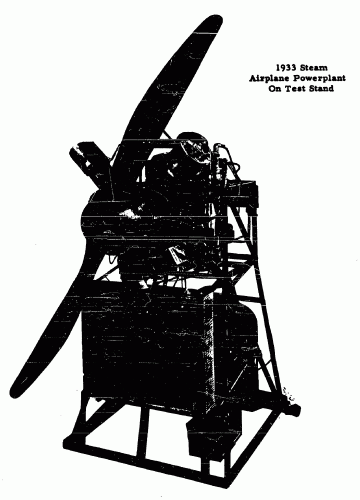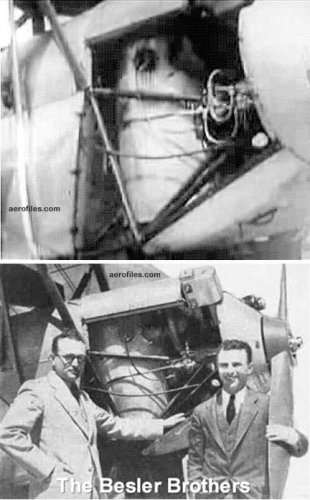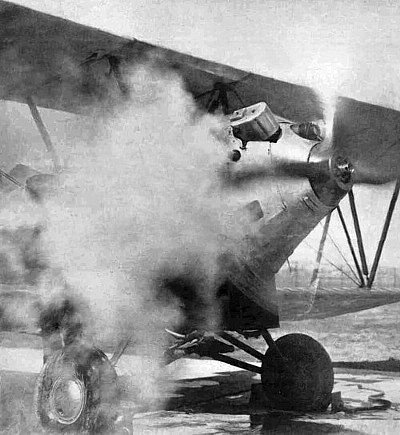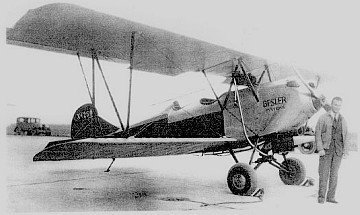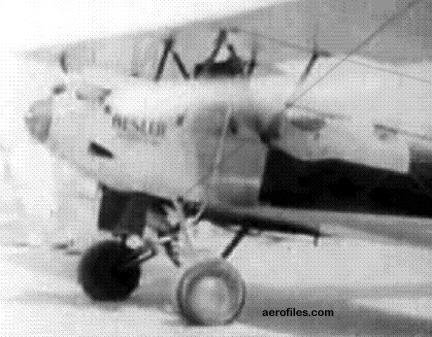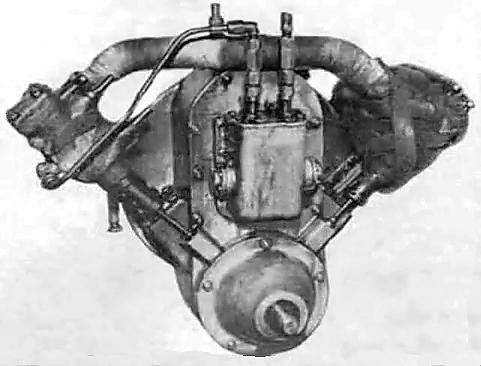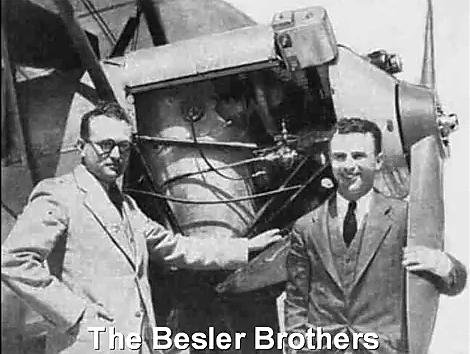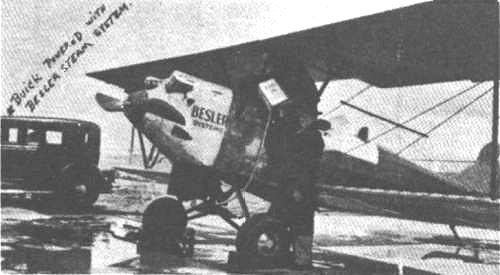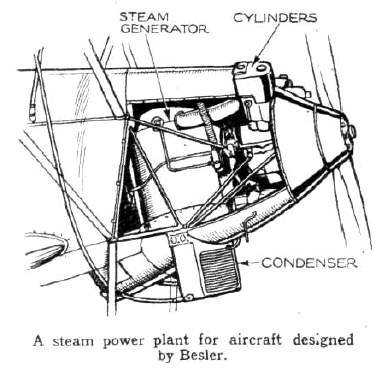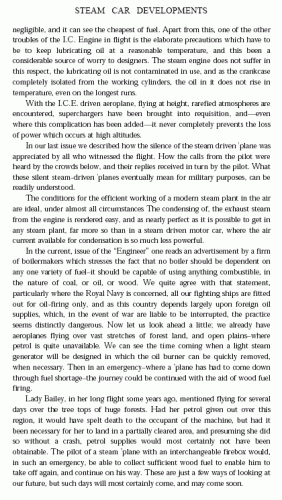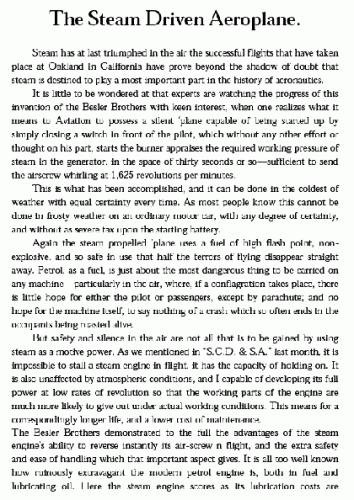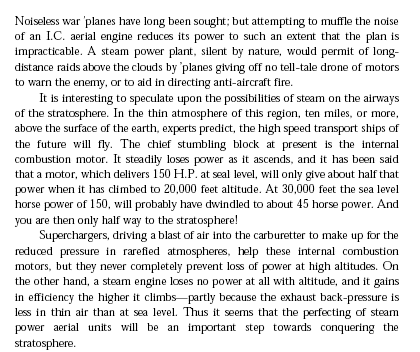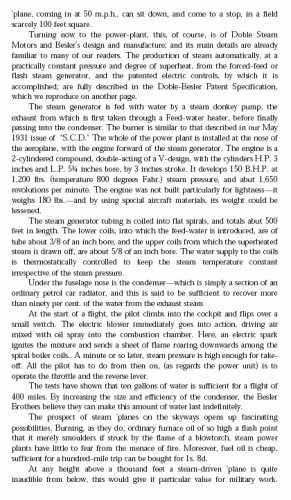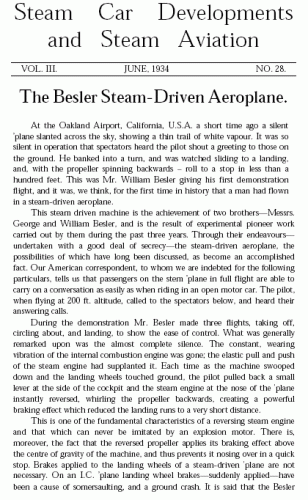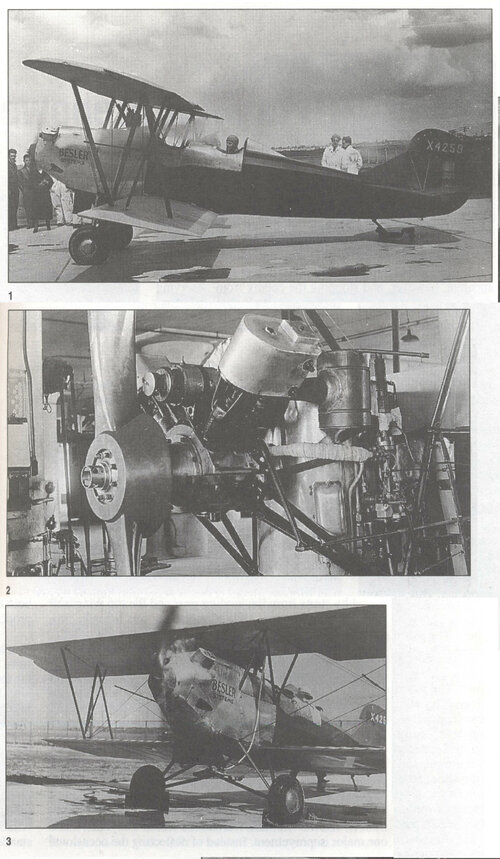- Joined
- 25 June 2009
- Messages
- 13,776
- Reaction score
- 3,046
You thought the Besler steam-engine biplane of 1933 (see next post) was wacky? Meet the 1954 Boundary Layer Control (BLC) aircraft project with FOUR steam engines!!
Source: A STEAM POWERPLANT FOR AN AIRPLANE EQUIPPED WITH BOUNDARY-LAYER CONTROL (University of Wichita, September 1954)
[NOTE: attachment below is a composite picture of several diagrams in source document]
As the speed of airplanes has reached the point where they are hardly suitable for airport operation, future developments must be concerned with lower-speed takeoffs and landings, and shorter-field performance. Boundary-layer control of fixed-wing aircraft is a very promising method of achieving this goal in a rugged, uncomplicated air frame. A steam powerplant has some unique characteristics that are applicable to a boundary-layer control plane. The engines can be expected to be reliable and not subject to sudden cutout, ana the boilers through interconnection by small, light-weight pipes can supply their energy to either thrusting or lifting devices, or both. Therefore, the failure of one power generator would not cause undue concern or loss of control. It is the objective of this report to present the essentials of a powerplant system to furnish quiet, reliable, flexible, multi-fuel engine power for a boundary-layer control airplane.
Extreme latitude exists in a steam-powered airplane in the matter of component disposition. The engines may be placed in the wings or other outlying positions while the boilers with the auxiliaries consolidated in an engine roor, or the complete powerplant may be housed in the engine nacelle. Power can be diverted from thrusting engines to boundary-layer control engines to eliminate the necessity of providing separate sources of power generation. Other advantages will become apparent throughout the report.
Source: A STEAM POWERPLANT FOR AN AIRPLANE EQUIPPED WITH BOUNDARY-LAYER CONTROL (University of Wichita, September 1954)
[NOTE: attachment below is a composite picture of several diagrams in source document]

